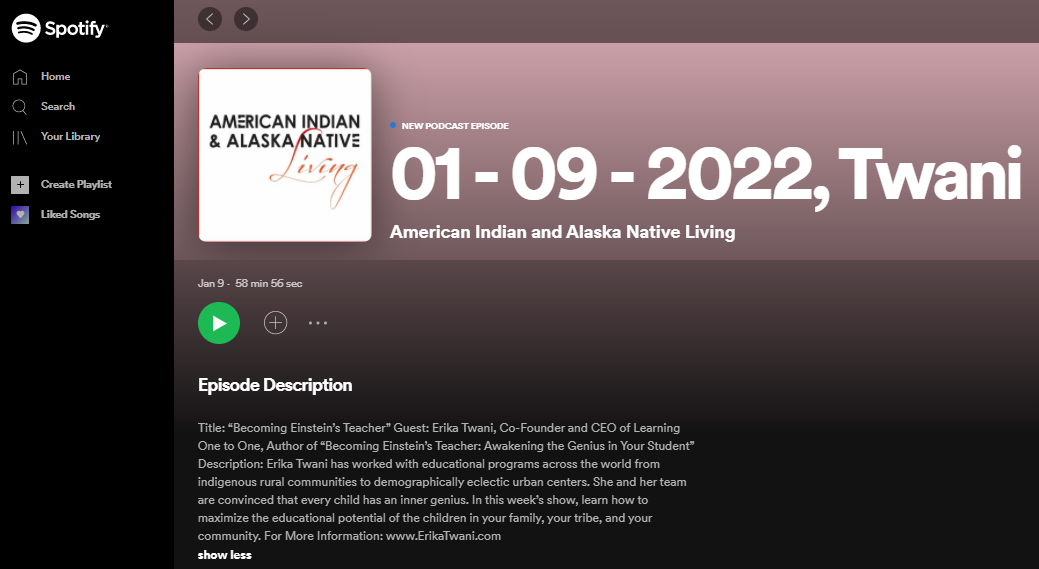PODCAST: Could A Change In Learning Style Propel Your Child to the Head of the Class?
Dr. David DeRose Interviews Erika Twani in his American Indian & Alaska Native Living show.
Listen now on Spotify.
American Indian Living is part of the Life Talk Radio Network, a one-hour weekly talk show focusing on health issues in the Indian country. The live talk show was developed for radio by the Native Education and Health Initiative, a non-profit organization providing comprehensive services for the health needs of American Indians through education. The show covers a broad range of health issues, viewed in a holistic way in keeping with traditional Native perspectives. Acting as show host is David DeRose M.D.
American Indian Living can be heard on some 170 stations throughout the U.S. and into Canada in addition to internet live streams hosted by the LifeTalk Radio and Native Voice One networks. Three other networks carry our show, Family First Radio, Strong Tower Radio, and Radio74.
Could A Change In Learning Style Propel Your Child To The Head Of The Class?
Erika Twani (www.erikatwani.com), author of Becoming Einstein’s Teacher: Awakening the Genius in Your Student, is co-founder and CEO of Learning One to One, where she and others explore ways to foster achievement through Relational Learning, a collaborative process between student and teacher. Twani will discuss for your listeners how young people can be transformed into more active and engaged learners – which will eventually turn them into more engaged and productive adults.
It takes approximately 10,000 hours for someone to become an expert at anything, with proper and continuous feedback during each step of the process. Children spend roughly 16,800 hours, from kindergarten through 12th grade, sitting and waiting for someone to tell them what to do. The only feedback they get is the grade they receive at the end of each quarter when there is nothing they can do about it. What can we expect of these students when they reach adult life?
Says Twani, “For too many students, school numbs their brains, causing dissatisfaction, boredom, stress, and anxiety. The result? Indifference, which they carry with them into the work world and turn into deliberate disengagement because of 16,800 hours of this practice.”
A recently released EdWeek Research Center survey found that 88% of middle and high school teachers said students were less motivated because of the pandemic and 50% of students agreed.
But while the pandemic may have exacerbated the situation, difficulties in getting students engaged is nothing new, Twani says. Often, that’s because in too many classrooms they are passive observers, simply listening to the teacher lecture them and then be tested.
“Relational Learning puts the student at the center of the process as an active, rather than a passive learner, with an increase in responsibility and accountability,” Twani says. The framework for this approach to learning helps students develop skills such as setting goals, connecting previous knowledge to new knowledge, and understanding how to put what they learn into action in their lives.
“I believe students can learn efficiently when we tap into the No. 1 resource they all have: a brain,” Twani says. “I also believe learners are unstoppable when they find their intrinsic motivation.”


